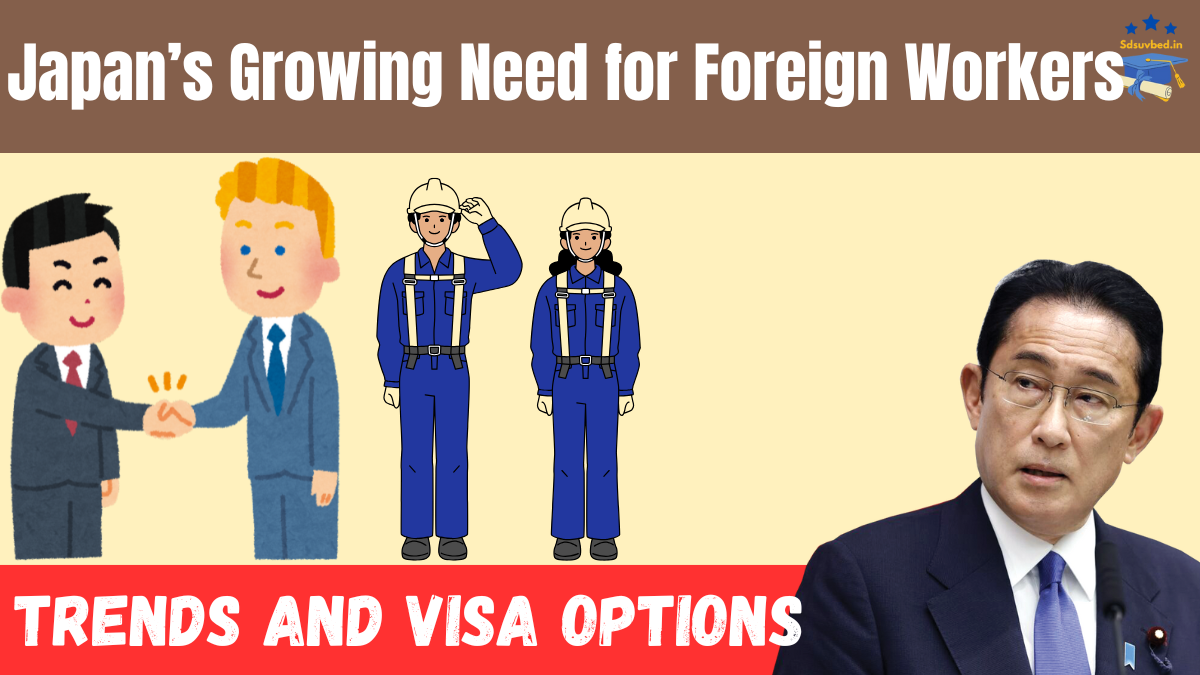Japan is experiencing an unprecedented surge in its foreign workforce, with numbers reaching 2.3 million in 2024. As labor shortages continue to affect key industries, international workers are playing a crucial role in manufacturing, hospitality, and retail. This trend reflects Japan’s evolving immigration policies and a growing reliance on foreign labor to sustain economic growth.

Why Is Japan Increasing Its Dependence on Foreign Workers?
Japan has one of the world’s oldest populations, with a declining birth rate and low domestic workforce availability. As a result, businesses across various sectors struggle to fill essential positions, making foreign labor a necessary solution.
The latest government data shows:
- A record 2.3 million foreign workers in 2024, marking an increase of 254,000 workers from the previous year.
- A nearly threefold increase in foreign workers over the past decade (from 788,000 in 2014 to 2.3 million in 2024).
- Growing demand for international workers in manufacturing, hospitality, and retail, where labor shortages are most severe.
Which Countries Contribute the Most to Japan’s Foreign Workforce?
Japan’s labor market is predominantly supported by workers from:
- Vietnam
- China
- The Philippines
These countries provide a significant portion of Japan’s skilled and semi-skilled workforce, particularly in fields such as engineering, caregiving, and technical training.
What Is the Role of the Technical Intern Training Program (TITP)?
One of the primary sources of foreign labor in Japan is the Technical Intern Training Program (TITP). This initiative was created to provide specialized training to foreign workers with the expectation that they will return home with enhanced skills.
Currently, 20.4% of Japan’s foreign workforce is enrolled in the TITP. However, the program has faced criticism, with some experts labeling it a “backdoor” labor system that allows foreign workers to enter Japan under the pretense of training while actually serving as a cheap labor force.
Despite these concerns, Japan continues to rely on the TITP to supply workers for sectors that struggle to attract local employees.
What Are the Best Visa Options for Foreign Workers in Japan?
For individuals seeking employment in Japan, multiple visa categories cater to different skill levels and industries.
1. Specified Skilled Worker (SSW) Visa
- Designed for foreign workers in industries facing severe labor shortages (e.g., caregiving, construction, food services).
- Available in two types:
- SSW-1: Requires passing a skills test and is renewable.
- SSW-2: Allows long-term residence and family sponsorship.
2. Highly Skilled Professional Visa
- Uses a points-based system to attract experts in technology, finance, and research.
- Offers fast-tracked permanent residency for highly skilled individuals.
3. Work Visa for Engineers, Specialists, and Instructors
- Covers professionals in IT, engineering, and teaching.
- Requires a job offer from a Japanese employer.
4. Technical Intern Training Program (TITP) Visa
- Designed for foreign interns participating in the TITP.
- Often criticized for strict conditions and limited worker protections.
MUST READ: Armscor Bursaries 2025: How to Apply for Full Funding
How Can Foreign Workers Navigate the Visa Application Process?
Applying for a Japanese work visa requires careful preparation. Key steps include:
- Researching visa requirements: Different visas have unique eligibility criteria, so it’s important to determine which option best suits your skills and background.
- Preparing documentation: This includes proof of educational qualifications, work experience, and language proficiency.
- Finding a sponsor: Many work visas require a Japanese employer to sponsor the application.
- Seeking professional advice: Consulting immigration specialists can help ensure a smoother application process.
What Does the Future Hold for Foreign Workers in Japan?
With labor shortages worsening, Japan is expected to expand visa programs and ease immigration policies in the coming years. The country’s increasing dependence on foreign workers suggests that:
- More industries may be added to the Specified Skilled Worker Visa category.
- The Technical Intern Training Program may undergo reforms to improve working conditions.
- Japan’s approach to permanent residency for foreign workers could become more flexible.
For individuals looking to build a career in Japan, now is a great time to explore job opportunities and understand visa options to secure employment in this evolving job market.
Click here to know more.
A passionate content writer specializing in creating engaging, SEO-optimized content. With expertise in blogs, web copy, and storytelling, I craft words that connect with audiences and deliver results.
